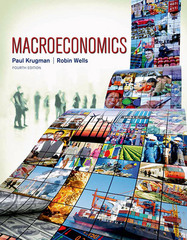



There are no right or wrong answers, i just want to see how you would go about answering them. I just need a different perspective on the answers.
J. Households suddenly become thriftier and want to save 10% more at every level of disposable income. Recalculate consumption and the MPC in above table and fill in the following: disposable income consumption marginal propensity to consume $7,000 $8,000 $9,000 $10,000 $11,000 $12,000 $13,000 k. Graph the relationship between consumption and income in this table. 1. Derive the new investment multiplier. m. How much does aggregate demand change if investment increases from $400 to $800? Show your calculations. 8. Imagine that a positive aggregate demand shock occurs in the economy. Assume that wages are sticky in the short run. a. Will the price level increase or decrease? Explain both short run and long run effects. b. Will real wages (for those workers with sticky nominal wages) increase or decrease? Explain both short run and long run effects.Explain both sho will the amount of labor employed (by employers that use long-term contracts) increase or decreases th short run and long run effects. d. Will output in the short run increase, decrease, or remain the same? Explain. Explain. . Will output in the long run increase, decrease, remain the same, or return to its previous level? f. Will the price level in the long run return to its previous level? If not, will it increase, decrease, or stay the same? Explain. 9. Complete the following table by indicating whether the initial effect of each change described in A through K affects AD, ASs, and/or ASIr outward/upward (+), inward/downward (-) or has no effect and leaves it unchanged (0). (Ignore any effects that might follow from the initial effect described in A through K.) changes AD A: increase in desired investment changes ASsr changes ASIr B: increase in taxes that reduces disposable income C: increase in government spending D: decrease in desired saving E: increase in demand for US goods by foreigners F: decrease in demand for foreign goods by US citizens G: increase in labor force participation rate H: decrease in the customary retirement age I: technological innovation that makes labor more productive J: increase in expected rate of inflation K: fall in foreign exchange value of dollar Using these predicted initial effects, indicate the ceteris paribus predicted effects on the price level, P; real output, y; and potential real output, y*. (Hint: "All else equal, there would be (upward (+), down- ward (-) or no pressure (0) on the price level, P." "All else equal, I predict that real output, y, would increase (+), decrease (-) or be unaffected (0).""All else equal, I predict that potential real output, y* would increase (+), decrease (-) or be unaffected (-).")Graded Assignment 11 625 Show how to derive an equation that describes the relationship between consumption and income for this economy. c. Derive the investment multiplier for this economy. d. Derive the government spending and net export multipliers for this economy and explain why (be precise) they are the same as the multiplier you derived in part c. e. If government spending decreases by $600, does aggregate demand increase or decrease? Explain why. Be precise. f. How much does aggregate demand change in part e? Show your calculations. g. If investment increases from $400 to $800, does aggregate demand increase or decrease? Explain why. Be precise. h. How much does aggregate demand change in part g? Show your calculations. i. If consumption was $10,600 before the increase in investment, what is your estimate of consump- tion after the multiplier process? Show your calculations.7. Consider the following data: disposable income consumption marginal propensity to consume $7,000 $6,600 $8,000 $7,400 $9,000 $8,200 $10,000 $9,000 $11,000 $9,800 $12,000 $10,600 $13,000 $11,400 a. Calculate the marginal propensity to consume for this economy at each level of income. (That is, fill in the third column in the above table.)effect on y* effect on y effect on P H : 10. Explain the long-run tradeoff a society faces if it chooses to increase aggregate savings. (Hint: What is the opportunity cost of increased aggregate savings? What is the benefit of increased aggregate savings?) 11. True, False, Uncertain (circle one; explain your answer): "A dollar is a dollar - $1,000 a year from now is worth as much as $1,000 today." 12. True, False, Uncertain (circle one; explain your answer): "A rapid recovery from a recession among the US's trading partners would help bring the US out of a recession." 13. True, False, Uncertain (circle one; explain your answer): "If the US economy goes into a deep reces- sion it's unlikely to have much effect on other countries around the world because, after all, each coun- try has its own economy." 14. Find an application or example (good or bad) of one of the ideas covered in Chapters 19 or 20 from the Wall Street Journal, the Economist, or the New York Times. Write an at-least-one-page essay dis- assignment. cussing the economics of the article you selected. Attach the article or a copy and your essay to this















